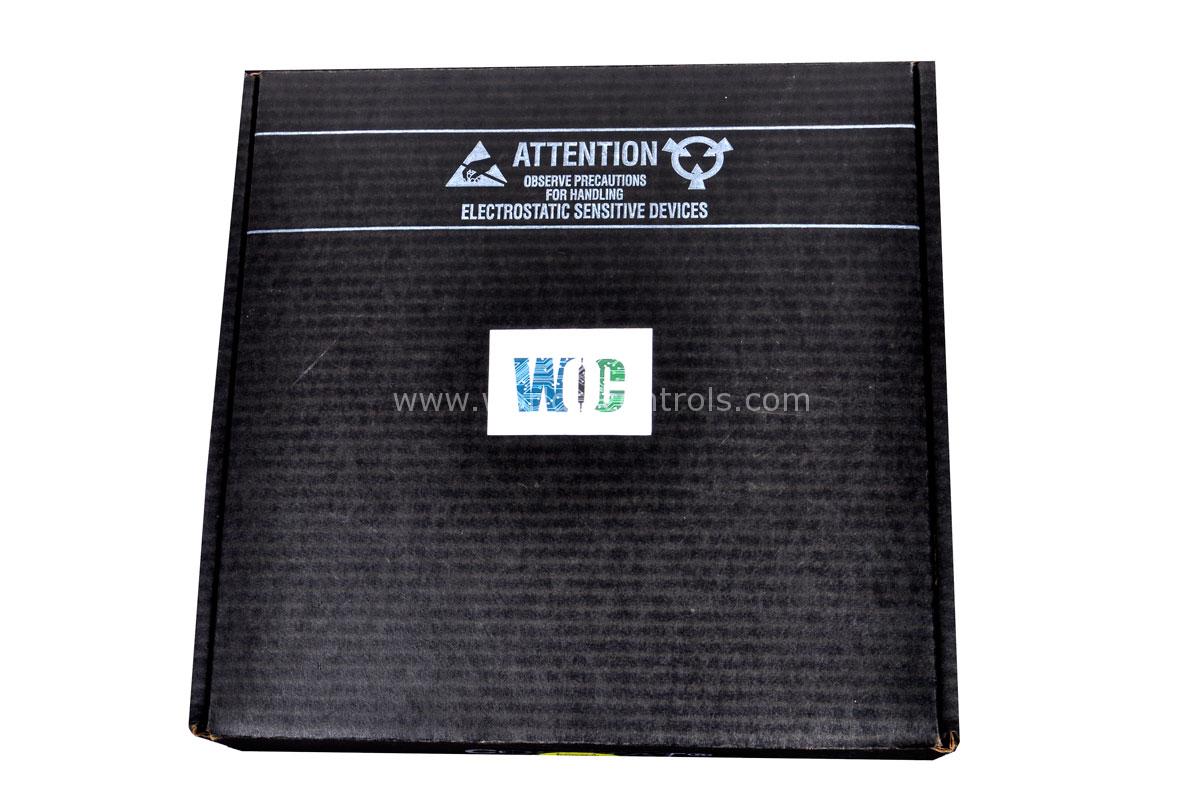SPECIFICATIONS
Part Number: 5464-018
Manufacturer: Woodward
Product type: Digital Speed Sensor
Repair: 3-7 Day
Availability: In Stock
Country of Manufacture: United States (USA)
Functional Description
5464-018 is a Digital Speed Sensor developed by Woodward. The Speed Input is processed by the Input Prescaler, which scales the signal for further analysis. A 20 MHz clock serves as the reference time base, synchronized through the Clock Prescaler. The prescaled input is counted by the 24-bit Counter-Register, which provides high-resolution speed data. A DSP 56001 processes this data, executing algorithms stored in the 32K x 24 EPROM, while the 1K x 16 Dual-Port RAM facilitates data exchange with external systems via the VME Bus, ensuring seamless integration and real-time performance.
Features
- Speed Input and Input Prescaler: The speed input signal originates from sensors such as tachometers, encoders, or proximity probes, which generate pulses proportional to the rotational speed of a machine or system. These signals are fed into the Input Prescaler for conditioning. The prescaler reduces the high-frequency input signal to a manageable level by dividing it by a predefined factor. This ensures compatibility with the processing limits of the subsequent modules and maintains accuracy. The scaled-down signal retains all the essential timing characteristics of the original input, enabling precise speed measurement.
- Clock Prescaler and 20 MHz Clock: A 20 MHz clock serves as the system's master timing source, providing a high-resolution time base for accurate measurements. This module divides the 20 MHz clock signal into lower frequencies required by other components, ensuring synchronization between the input signals and the internal timing mechanisms. For example, it provides timing signals for counting and data synchronization across the system.
- 24-Bit Counter-Register: The 24-bit counter-register captures and counts the pulses from the prescaled input signal. This high-resolution counter can handle large counts before overflowing, making it suitable for precise measurements across a wide range of speeds. The counter outputs data representing the frequency of the input signal. Since frequency is directly proportional to speed, this data is critical for accurately determining the rotational speed of the monitored system.
DSP (Digital Signal Processor) 56001: The DSP 56001 is a powerful processor specifically designed for fast numerical computations and real-time signal processing. It plays a central role in analyzing and refining the data obtained from the counter-register.
- Processing Tasks: Converts frequency data to speed using algorithms. Filters noise or disturbances in the input signal. Performs advanced diagnostics or error detection for predictive maintenance.
- Connection: The DSP communicates with other components, such as the EPROM and dual-port RAM, via the local bus, enabling efficient data transfer and coordination.
- 32K x 24 EPROM: The EPROM (Erasable Programmable Read-Only Memory) stores the firmware, lookup tables, and algorithms required for the module's operation. It ensures that the DSP has access to pre-defined computations and instructions for handling various input conditions.
- 1K x 16 Dual-Port RAM: The dual-port RAM acts as a shared memory space that facilitates communication between the DSP and external systems, such as controllers or data acquisition modules. It temporarily stores intermediate results, processed data, or commands during operation.
- Dual-Port Nature: Both the DSP and external systems (via the VME Bus) can access the RAM simultaneously without delays, ensuring real-time data availability.
- VME Bus: It serves as the communication backbone between the Digital Speed Sensor Module and external systems, such as controllers or monitoring devices. It allows the transfer of processed speed data or receipt of configuration commands, enabling seamless integration into larger systems.
Signal Flow
- Input Signal Handling: The raw speed input signal is fed into the Input Prescaler, which scales it down to a frequency suitable for processing.
- Counting and Timing: The prescaled signal is fed into the 24-bit counter-register, which counts the pulses over a specific time frame, synchronized by the 20 MHz clock and its prescaler.
- DSP Processing: The DSP retrieves the count data, applies algorithms (stored in the EPROM), and converts it into meaningful speed data. It may also filter noise and perform additional diagnostics.
- Data Sharing: Processed speed data is stored temporarily in the dual-port RAM for access by the external system via the VME Bus.
World of Controls has the most comprehensive selection of GE and Woodward components. Our professionals are available to help you with your requirements at any time. If you require any additional information, please contact WOC immediately.
Frequently Asked Questions
What is 5464-018?
It is a Digital Speed Sensor developed by Woodward.
How does the speed input signal work?
The speed input signal, typically in the form of pulses from a tachometer or encoder, is scaled by the Input Prescaler. These pulses are then counted by the 24-bit counter-register to determine the frequency, which is directly proportional to the speed of the monitored system.
What role does the DSP 56001 play in the module?
The DSP (Digital Signal Processor) 56001 performs real-time processing, such as frequency-to-speed conversions, signal filtering, diagnostics, and other computational tasks. It ensures precise and reliable speed measurement and analysis.
What is the role of the VME Bus?
The VME Bus allows high-speed communication between the module and external systems, such as controllers or monitoring devices. It facilitates data transfer and the integration of the module into larger control systems.
How is the module synchronized with the input signal?
A 20 MHz clock signal serves as the module’s reference time base. The Clock Prescaler synchronizes this clock with the input signal and other internal components, ensuring precise timing and data accuracy.
